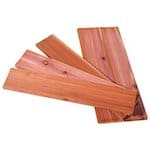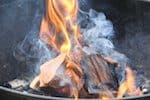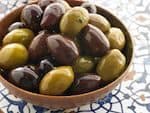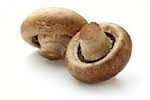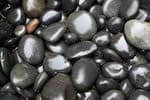Cabernet Sauvignon Taste & Grape Variety Profile
Last Updated on October 29, 2023.
Cabernet Sauvignon is a red wine grape variety of the grapevine species vitis vinifera. It is the most widely grown red wine grape variety in the world, and its wines were recently ranked as the most searched and sought-after in the world.
It can form a full-bodied, complex, fruit-forward and dry wine when vinified correctly. The Cabernet Sauvignon grape has received most of its notoriety from being grown in the Bordeaux region of France. Traditionally speaking, these wines taste of heavy red and black fruit backed by noticeable tannins.
IN THIS GUIDE:
- Taste
- Pairings
- Terroir
- Aging
- Wine Recommendations
- …and more
What Does Cabernet Sauvignon Taste Like?
The climate Cabernet Sauvignon is grown in has been known to substantially affect its taste. Cooler climate Cabernet will tend to yield a more dark-fruit-forward wine with evidence of acidity. While warmer climates tend to yield more evidence of rich red fruit.
Classic fruit notes are deep and dark: blackberry, black cherry, plum, cassis, and raisins. Earth and mineral notes can vary depending on terroir and vinification methods but classic notes include cedar, bell pepper, cracked spice, wood smoke, oak, tobacco, black olive, mushroom, mint, and wet gravel.
Cabernet Sauvignon Food Pairings
Because of its complexity and high tannin structure, Cabernet Sauvignon is a great choice with any poultry or meat dish. The rugged spiciness of the wine combined with its dark fruit and earth will easily balance out grilled poultry, grilled pork, filet mignon, rack of lamb, or braised pork ribs perfectly. For vegetarian dishes, it works well with spiced mushroom, eggplant, or quinoa-based dishes.
For cheese pairings, Cabernet Sauvignon works best with medium to sharp cheeses, like aged cheddar, apple-smoked gouda, asiago, gruyere, goat cheese, stilton, or bleu cheese.
Climate and Terroir for Cabernet Sauvignon
Cabernet Sauvignon is a choice grape variety for wine drinkers and vintners alike because of its taste profile and ease to produce. The vines are incredibly hardy and can grow in an array of climates and terroirs. They produce grapes with thick skins which are highly resistant to damaging weather like frost and hail.
Yields are often high, which can be a huge positive for winemakers considering that Cabernet is one of the most in-demand red wines around the world. On the other hand, controlling yields is also important for more boutique, craft wineries who are looking for a more refined product. This requires further investment in labor costs and a choice selection in terroir.
Ironically, if you were to look at it on a timescale starting when humans first tried wine, Cabernet Sauvignon hasn’t been around that long. It was stumbled upon during the 17th century in Southwestern France, where Sauvignon Blanc and Cabernet Franc were crossed to form a new grape variety. (This was recently discovered in 1996 where DNA testing was done at the UC Davis Department of Viticulture and Enology).
Beyond Bordeaux, there are a plethora of quality Cabernet growing areas. Venture into regions like the Loire Valley, Lebanon’s Beqaa Valley, Tuscany, and Navarra in Spain to truly expand your palate and see this grape’s potential.
While centuries of wine production in Bordeaux helped launch Cabernet to fame over time, other regions like Napa Valley have helped bring it to the forefront of the new world as a single-varietal red wine. Many Bordeaux winemakers are known for blending Cabernet Sauvignon with other varieties, such as Merlot and Cabernet Franc.
With wine production is expanding globally at a record pace, wine enthusiasts should begin to look towards other old world and new world wine-producing regions to sample new takes on Cabernet Sauvignon. In North America, Washington State is growing gorgeous examples of Cabernet in AVAs including Yakima, Walla Walla, Red Mountain, Horse Heaven Hills and the Columbia Valley. California wine lovers undoubtedly should continue to keep an eye on Sonoma County’s wines. Paso Robles, and Lake County. The Santa Cruz Mountains are also crafting some delicious examples.
A variety of New World countries and regions produce fantastic Cabernet. From New Zealand’s Hawke’s Bay region to Australia’s McLaren Valley, all the way to regions across Chile and even Stellenbosch in South Africa.
How Cabernet Sauvignon is Aged
Cabernet Sauvignon produces some of the most age-worthy wines in the world. Cab loves oak – it’s such a bold wine that it’s almost impossible for oak to be intrusive. Instead, oak can really work wonders to round out the rough edges of young Cabernet Sauvignon.
French, American, and Hungarian oak all work well with Cab and it’s rare that oak isn’t used. High-end Bordeaux and high-end Napa Cabs can age for decades, and even less expensive Cabernets can age for a bit. While we don’t necessarily recommend hanging on to an inexpensive wine for years – they are, after all, meant to be drunk young – with Cab, it could be a fun experiment just to see what happens.
Try some of these great Cabernet Sauvignon wines and Cabernet-based blends from around the world:
- Chateau Pontet-Canet, Pauillac, Bordeaux, France
- Chateau Brane-Cantenac, Margaux, Bordeaux, France
- Clos du Val, Hirondelle Vineyard, Stags Lead District, Napa Valley, California
- Obsidian Ridge, Red Hills, Lake County, North Coast, California
- L’Ecole 41, Walla Walla Valley, Columbia Valley, Washington
- Hacienda Araucano ‘Gran Araucano,’ Colchagua Valley, Rapel Valley, Chile
Learn About These Other Wine Grape Varieties
Written By Jamie Metzgar
Jamie Elizabeth Metzgar began her career in wine by pouring in a tasting room on the East End of Long Island, NY. After moving to New York City, she landed a position at Chambers Street Wines where she was encouraged to pursue wine education at the Wine & Spirits Education Trust (WSET). She earned Level III certification there and has since earned California Wine Appellation Specialist and Certified Specialist of Wine certifications as well. After way too many moves, she has recently landed in Northern California where she is compiling an unofficial roster of dog-friendly tasting rooms.
Cabernet Sauvignon Taste & Food Pairings
Fruit
The climate Cabernet Sauvignon is grown in has been known to substantially affect its taste. Cooler climate Cabernet will tend to yield a more dark-fruit forward wine. While warmer climates tend to yield more evidence of acidity and red fruit.
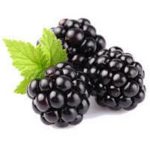
Blackberry
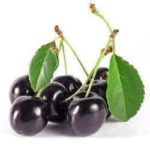
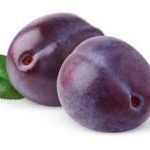

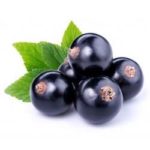
Structure & Body
Depending on how and where Cabernet Sauvignon is produced, the structure of these wines can vary. For the most part, Cabernet Sauvignon is produced to be a full-bodied, dry red wine. Variations produced in the New World (such as Napa Valley), tend to be more fruit-forward, while variations produced in the Old World (such as Bordeaux), tend to have more earthy and terrior-driven complexities with less agressive fruit flavors.
Structure
Body: Full
Sugar: Dry
Tannins: Medium - High
Acid: Medium - High
Alcohol: Varied (13%-15.5% ABV)
Finish: Structured, Medium-Long
Meat & Poultry
Because of its complexity and high tannin structure, Cabernet Sauvignon is a great choice with any poultry or meat dish. The rugged spiciness of the wine combined with its dark fruit and earth will easily balance out a piece of filet mignon, lamb or braised pork ribs perfectly. Lamb, Steak, Poultry (Grilled), Pork (Grilled), Duck, Venison
Medium - Sharp Cheese
Aged Cheddar, Apple-Smoked Gouda, Asiago, Gruyère, Goat Cheese, Stilton, Blue Cheese

